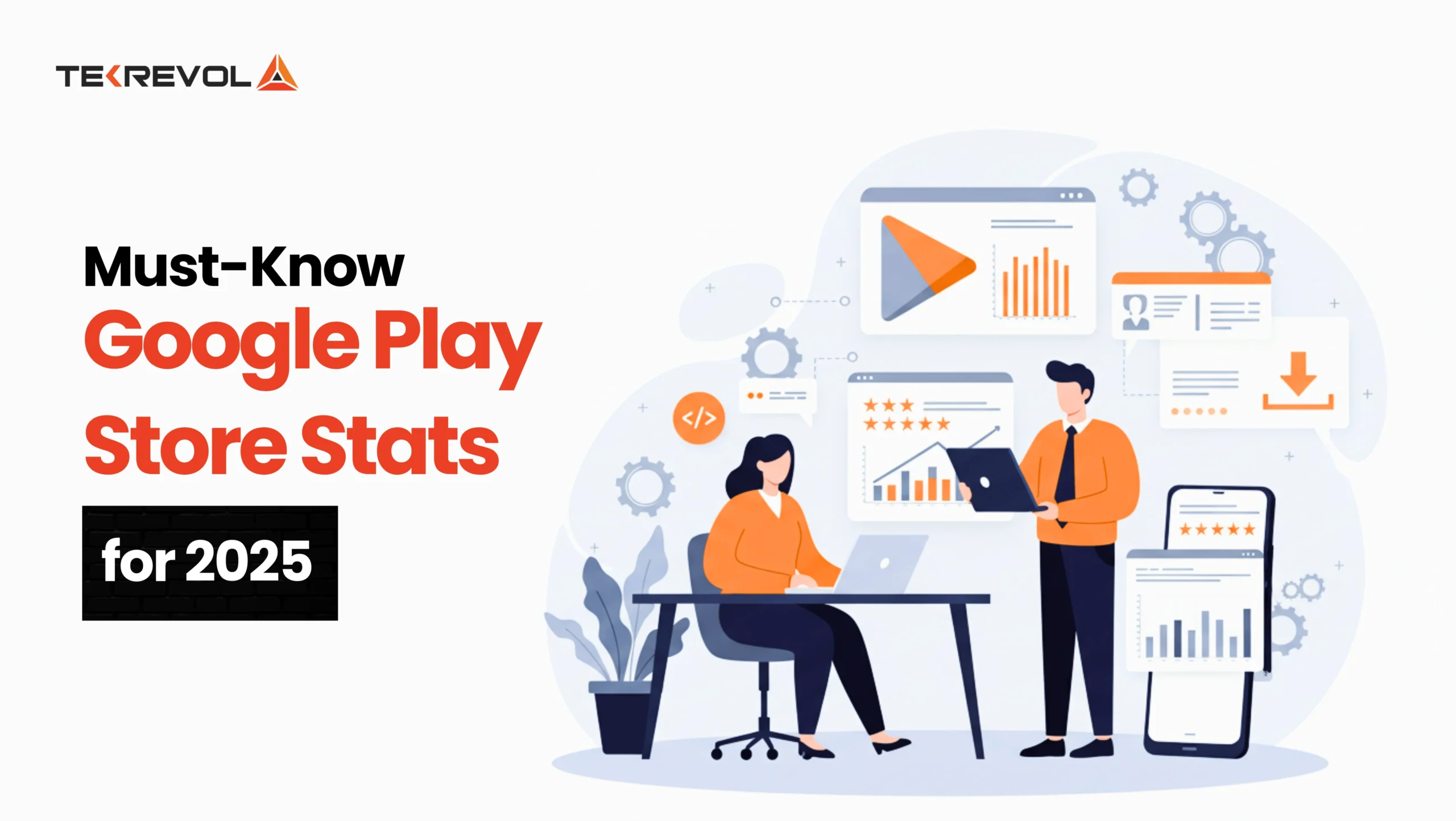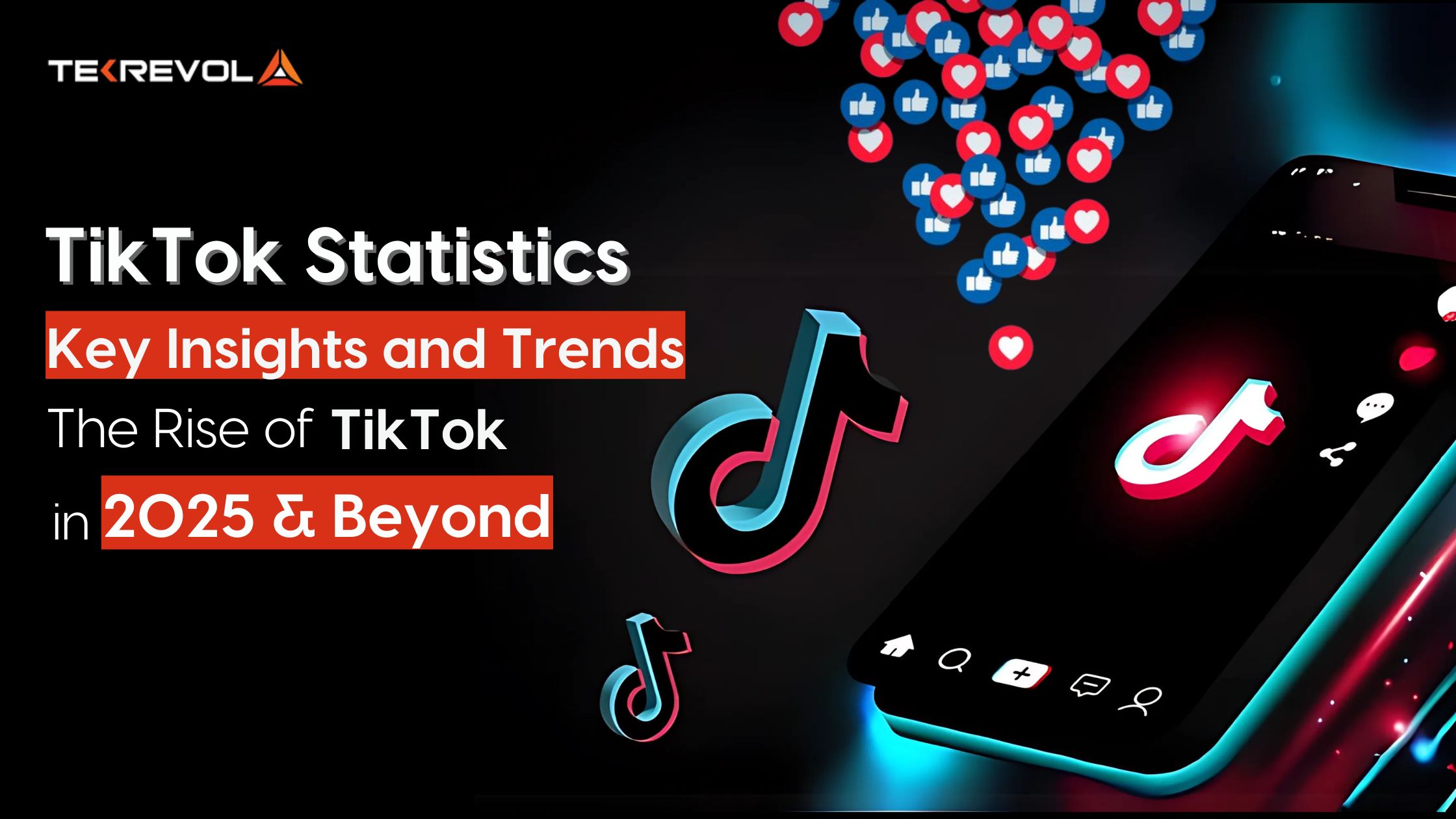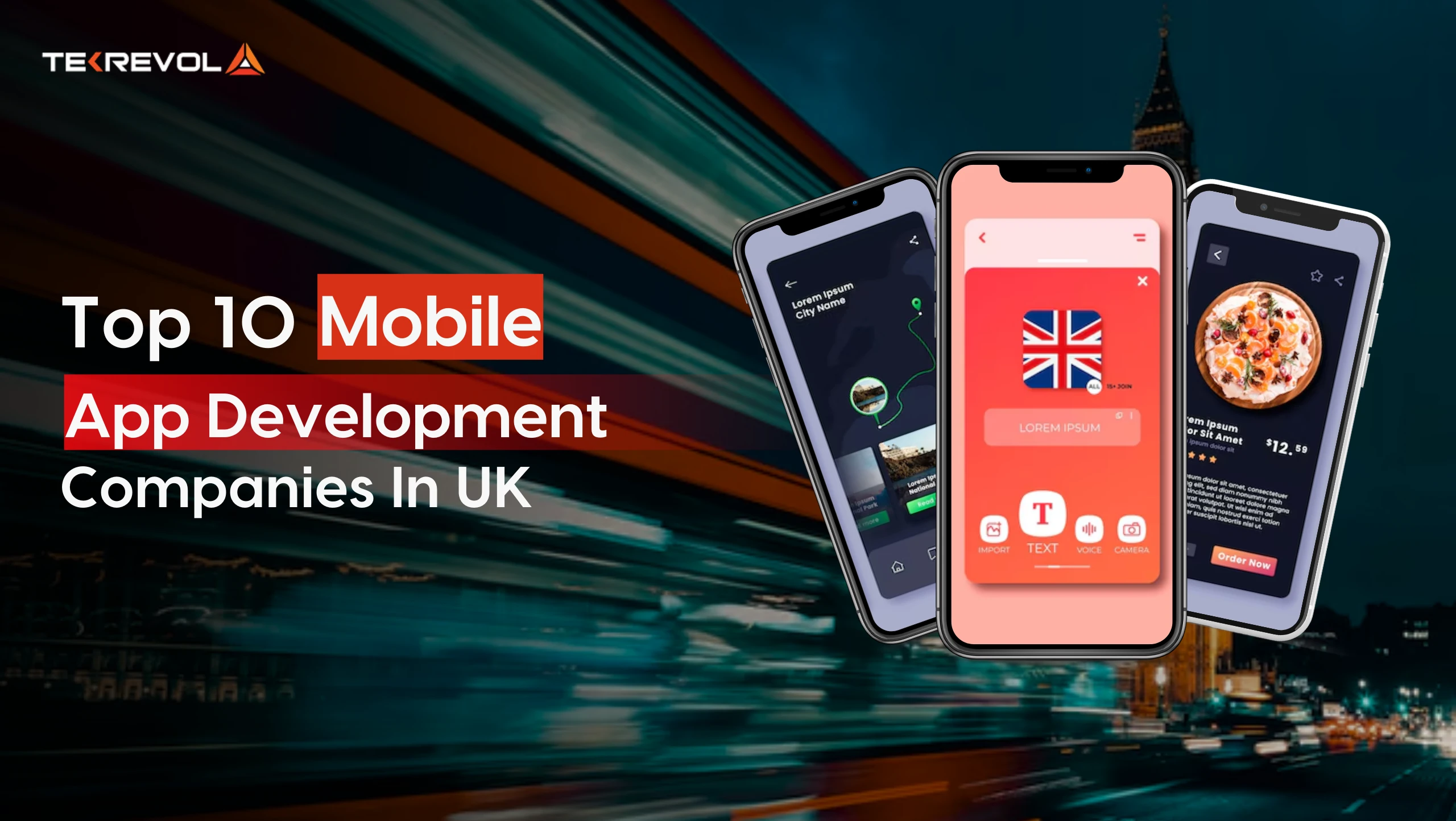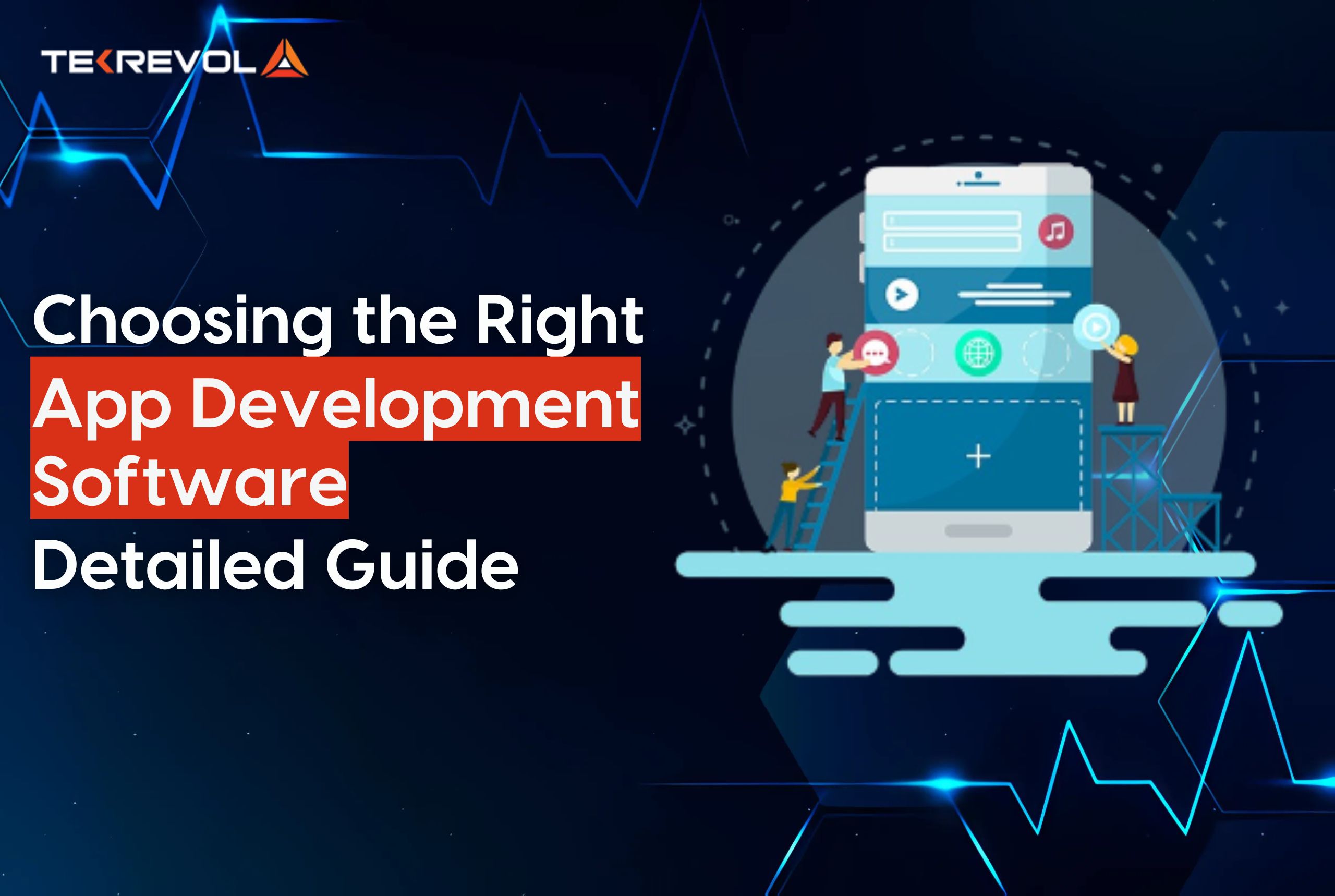‘The secret of getting ahead is getting started” – Mark Twain.
Of course, Twain most likely wasn’t referring to launching an ecommerce website, but still, if he were here with us today, he’d certainly be offering his insights (and his signature mustache-trimming kits) on the internet.
The truth is that ecommerce business startups are thrilling and frightening, similar to cannonballing into a swimming pool without first gauging how deep it is. Will you splash, or will you belly flop? It depends on how well you plan, construct, and refine your store.
This guide is not another generic “start an ecommerce business” post. It’s your step-by-step guide to creating a website that actually generates revenue.
No fluff, no dry textbook writing, just real-world advice, practical tips, and a dash of humor to keep things fun. So, if you’re ready to make your ecommerce dream a reality, let’s get started!
The Ecommerce Landscape Explained
Trends in Ecommerce Today
Ecommerce is changing at a pace never seen before. Here are some revolutionary trends you need to know:
- Mobile Shopping Supremacy: Over 73% of ecommerce sales will be made through mobile devices in 2024. If your store is not mobile-optimized, you’re essentially giving customers to your competitors.
- Social Commerce is Booming: Instagram, TikTok, and Facebook are no longer just for memes. Companies are selling directly on these platforms, and social commerce is a $1.2 trillion market by 2025.
- AI & Personalization: AI-powered recommendations boost conversion rates by 30%. Consider how Amazon recommends the very thing you didn’t know you needed!
Understanding Your Target Audience
Before you begin selling, you must understand who you’re selling to. Ask yourself:
- Who is my dream customer? Age, location, preferences, shopping behavior?
- What are the problems my product addresses?
- Where does my target market congregate online?
Knowing your customers allows you to customize your marketing, product offerings, and even site design for optimal conversions.
Competitor Analysis
Your competitors are goldmines of data. Here’s how to stalk (legally) them:
- See What’s On Their Site: How is their user experience? What pages are most popular?
- Social Media Track: What kind of content are they creating? What posts receive the most interaction?
- Customer Feedback: See what customers adore and detest about them. Use this information to improve.
Competitive analysis keeps you different from the competition and prevents you from making expensive mistakes.
Planning Your Ecommerce Business
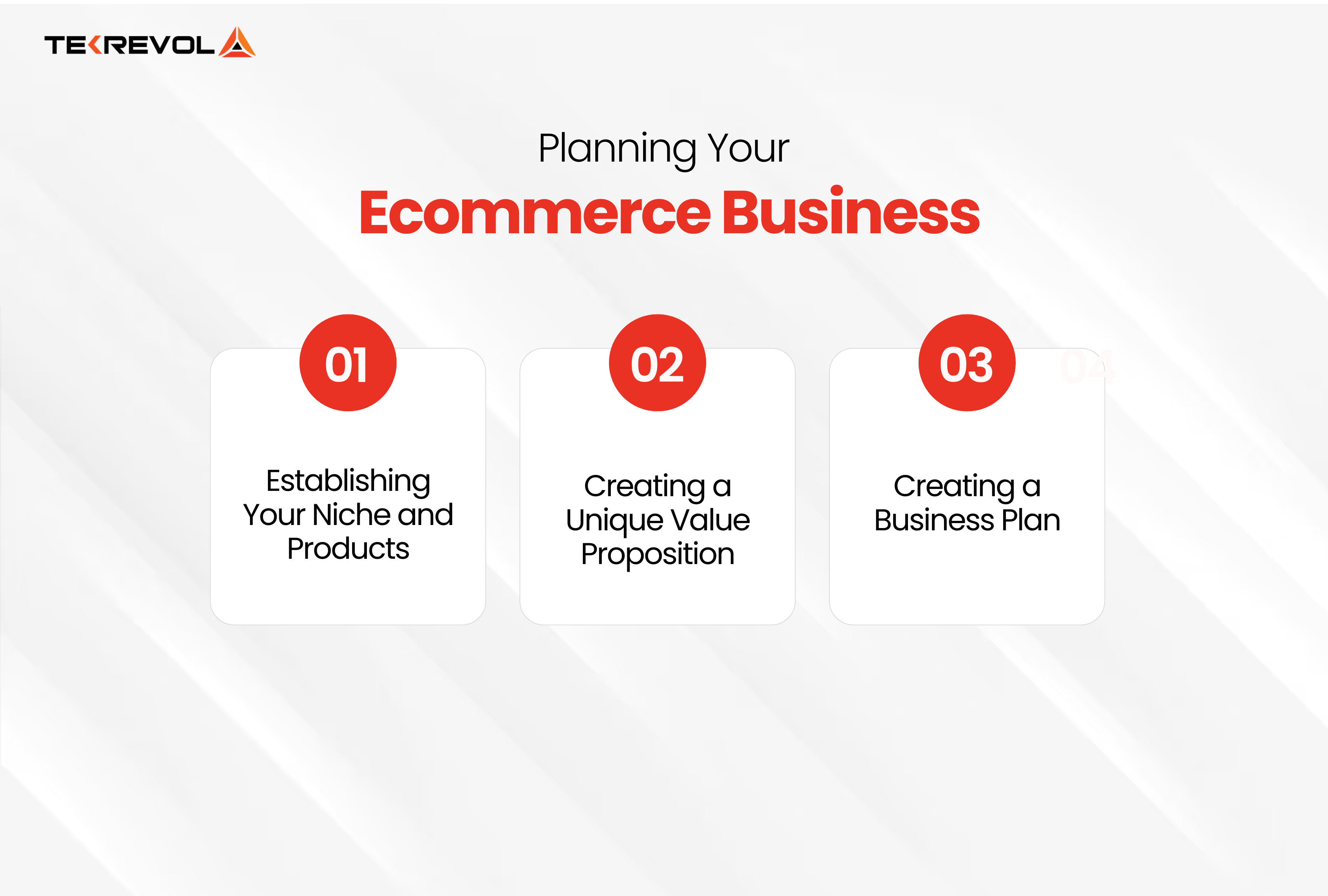
Establishing Your Niche and Products
Selecting the ideal niche is like selecting the ideal pizza topping—it makes all the difference.
- Broad Niche? Too much competition.
- Super-Specific Niche? Too few buyers.
- Balanced Niche? Just right.
For instance, rather than selling “fitness gear,” sell “eco-friendly yoga mats for travelers.” Less competition, more focused buyers.
Creating a Unique Value Proposition
Ask yourself: Why would customers purchase from me rather than Amazon? Your Unique Value Proposition (UVP) must be concise, compelling, and clear. It may be:
- Superior Quality – “Handmade, organic soaps made with love.”
- Better Pricing – “Designer sunglasses at a non-designer price.”
- Personalized Service – “Personalized skincare regimens for every complexion.”
Creating a Business Plan
Your business plan is your game plan to success. Essential components to cover:
- Goals and Objectives: Where do you envision your business in 1, 3, and 5 years?
- Target Audience: Who are your customers?
- Marketing Plan: How will you get customers?
- Financial Projections: Projected costs, revenue, and profit margins.
Pro tip: Make your plan adaptable. Ecommerce changes rapidly!
Selecting the Best Ecommerce Platform
Overview of Popular Ecommerce Platforms
There are many ecommerce platforms to pick from, but here are the most popular:
- Shopify: Best for newbies. Easy to use, with lots of integrations.
- WooCommerce: Great if you adore WordPress and desire complete control.
- Magento: A high-powered choice for big businesses (but needs technical know-how).
- BigCommerce: Wonderful for scalability with no transaction fees.
Considerations When Selecting a Platform
- Ease of Use: Can you handle it without employing a developer?
- Customization: Do you require custom features, or is a template acceptable?
- SEO & Marketing Features: Does it have blogging, analytics, and email marketing functionality?
- Pricing: Is it affordable? Consider beyond the subscription price.
Self-Hosted vs. Hosted Solution Advantages and Disadvantages
- Self-Hosted (WooCommerce, Magento): You have complete control, but there is maintenance work.
- Hosted (Shopify, BigCommerce): Simple to set up and manage, but with less control over customization.
Select according to your technical expertise, budget, and long-term strategy.
- Feeling Lost in the Ecommerce Jungle?
- Let’s build a store that’s easy to manage, beautiful to browse, and impossible to resist.
Designing Your Ecommerce Website
Role of Responsive Design
With more than 50% of ecommerce traffic on mobile, a responsive website is not optional. If customers must pinch and zoom, they’ll bounce faster than a bad check.
User Experience (UX) Best Practices
- Simple navigation: If users can’t locate what they’re looking for in three clicks or less, they’ll abandon you.
- Quick loading speed: 47% of consumers expect a site to load in 2 seconds or less.
- Simple CTAs: Make your “Buy Now” button large, bold, and conspicuous.
Must-Have Pages and Features
- Homepage: Get it visually beautiful, quick, and easy to use.
- Product Pages: Simple descriptions, good photos, and reviews from customers.
- Checkout Page: No distractions, no hidden fees, no unnecessary steps.
Adding Branding Elements
Your brand identity should come across:
- Consistent Colors & Fonts
- Unique Logo & Tagline
- Branded Packaging & Messaging
This creates trust and makes you memorable.
Developing Product Pages That Convert
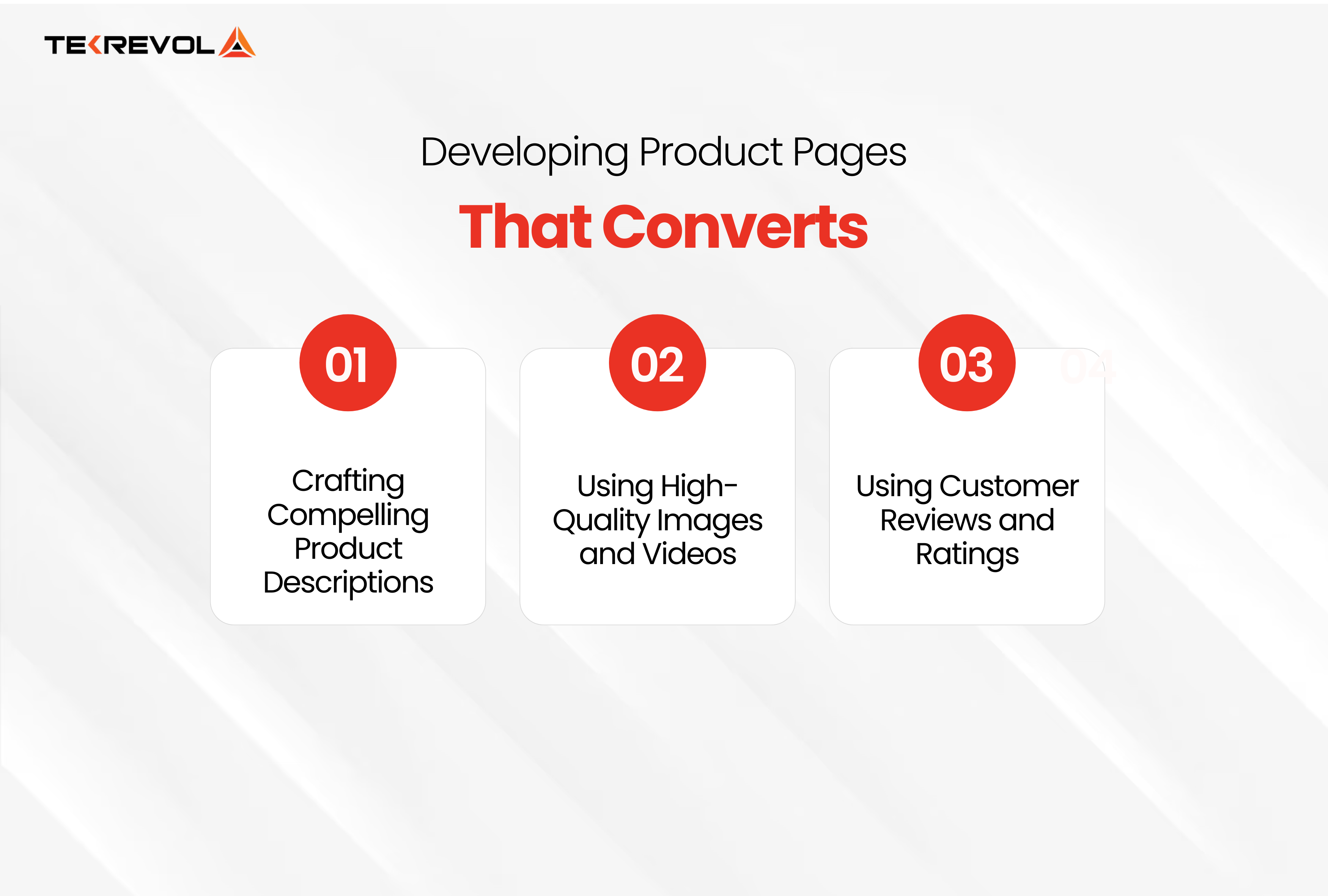
Crafting Compelling Product Descriptions
Think of your product description as a salesperson covering the site in the text — you need to present something persuasive, informative, and entertaining.
A boring, standard description is not going to be good enough.
Instead:
- Emphasize Benefits, Not Just Features: Instead of saying, “This blender has five-speed options,” you can say instead, “Blend smoothies, soups, and sauces perfectly with five precision speed options.“
- Use Power Words: Use words like “effortless,” “exclusive,” “limited edition,” and “game-changing” to boost engagement.
- Tell a story: Instead of saying, “100% cotton T-shirt,” how about, “Made from super-soft, breathable cotton so you feel cool on the hottest summer days?“
And don’t use jargon unless your customers are tech-heads; keep it straightforward.
Using High-Quality Images and Videos
Humans are visual beings—your customers can’t touch or taste your products, so the next best thing? Breathtaking visuals.
- Utilize High-Resolution Photos: Blurry photographs shriek unprofessional.
- Reveal Multiple Angles: Allow customers to see all aspects of the product.
- Use Lifestyle Shots: A watch on a wrist, a chair in a snug living room—this enables customers to imagine the product in their lives.
- Videos Work Miracles: A video can boost conversions by up to 80%. Show the product in use!
Using Customer Reviews and Ratings
Need to increase trust immediately? Let others sell for you. 93% of customers read reviews prior to buying.
Get customers to review by:
- Sending purchase follow-up emails
- Providing minor incentives (future order discounts)
- Making review easy to do
Even bad reviews (if managed properly) can increase credibility – nobody believes in a 100% five-star rating.
Creating Secure Payment and Shipping Options
Payment Gateway Selection
Want customers to finalize their purchase rather than rage-quitting during checkout? Provide several secure payment options:
- Credit/Debit Cards (Visa, MasterCard, AMEX)
- PayPal (Used by more than 400 million people worldwide!)
- Apple Pay & Google Pay (One-click payments = quicker checkout)
- Buy Now, Pay Later (BNPL) such as Klarna or Afterpay
Interesting fact: 17% of customers leave their cart due to a lack of trust in payment methods. Don’t be that shop.
Securing Payment Safety and Compliance
Buyers won’t make a purchase if they perceive your site as questionable. Keep their data safe by:
- Applying SSL Certificates (HTTPS = Trust)
- Enforcing PCI-DSS compliance (when processing credit card information)
- Providing secure checkout processes with encryption
If your site appears old or dodgy, shoppers will bounce quicker than you can utter ‘fraud alert.’
Providing Multiple Shipping Options
“Ugh, shipping fees!” – All online consumers ever.
Provide shoppers with several alternatives:
- Free Shipping (Even if you build the cost into product prices, it drives more conversions)
- Express Shipping (For people like me who are impatient)
- International Shipping (If you sell internationally, don’t overlook this!)
Pro Tip: 46% of customers leave their carts behind because of excessive additional charges. Be transparent about shipping charges!
Developing a Simple Return and Refund Policy
If your return policy is difficult to locate or unclear, customers won’t purchase.
- Make it simple (e.g., “30-day hassle-free returns.”)
- Make it convenient (Offer a return shipping label!)
- Be fair (No one likes a store that makes returns impossible.)
Having a clear, fair return policy actually boosts sales – shoppers feel safer buying from you.
- Hackers Love Unsecured Websites. Don't Be Their Next Snack.
- We’ll lock down your store tighter than Fort Knox
Implementing SEO Strategies for Ecommerce
Keyword Research for Product Pages
If you’re not optimizing your store for Google searches, you’re leaving money on the table.
- Use long-tail keywords (e.g., instead of “running shoes,” try “best running shoes for flat feet”).
- Optimize for voice search (People search differently when they speak: “Where can I buy comfy sneakers?”).
- Use Google Keyword Planner or Ubersuggest to discover what people actually search.
On-Page SEO Techniques
- Optimize Title Tags & Meta Descriptions (Make them interesting and keyword-dense!)
- Optimize URLs for SEO (Say goodbye to “product-123” and hello to “best-blue-running-shoes”).
- Image Optimization (SEO from alt text and compression for speed).
Building Backlinks and Domain Authority
- Become featured on news and blog sites for authority.
- Guest blogging on relevant industry websites.
- Influencer partnerships (A shoutout by a prominent influencer = traffic galore).
Using Schema Markup
Want Google to love your store? Use schema markup for:
- Star ratings
- Product pricing
- Availability
It makes your product listings pop in search results, boosting click-through rates.
Effective Marketing Strategies Implementation
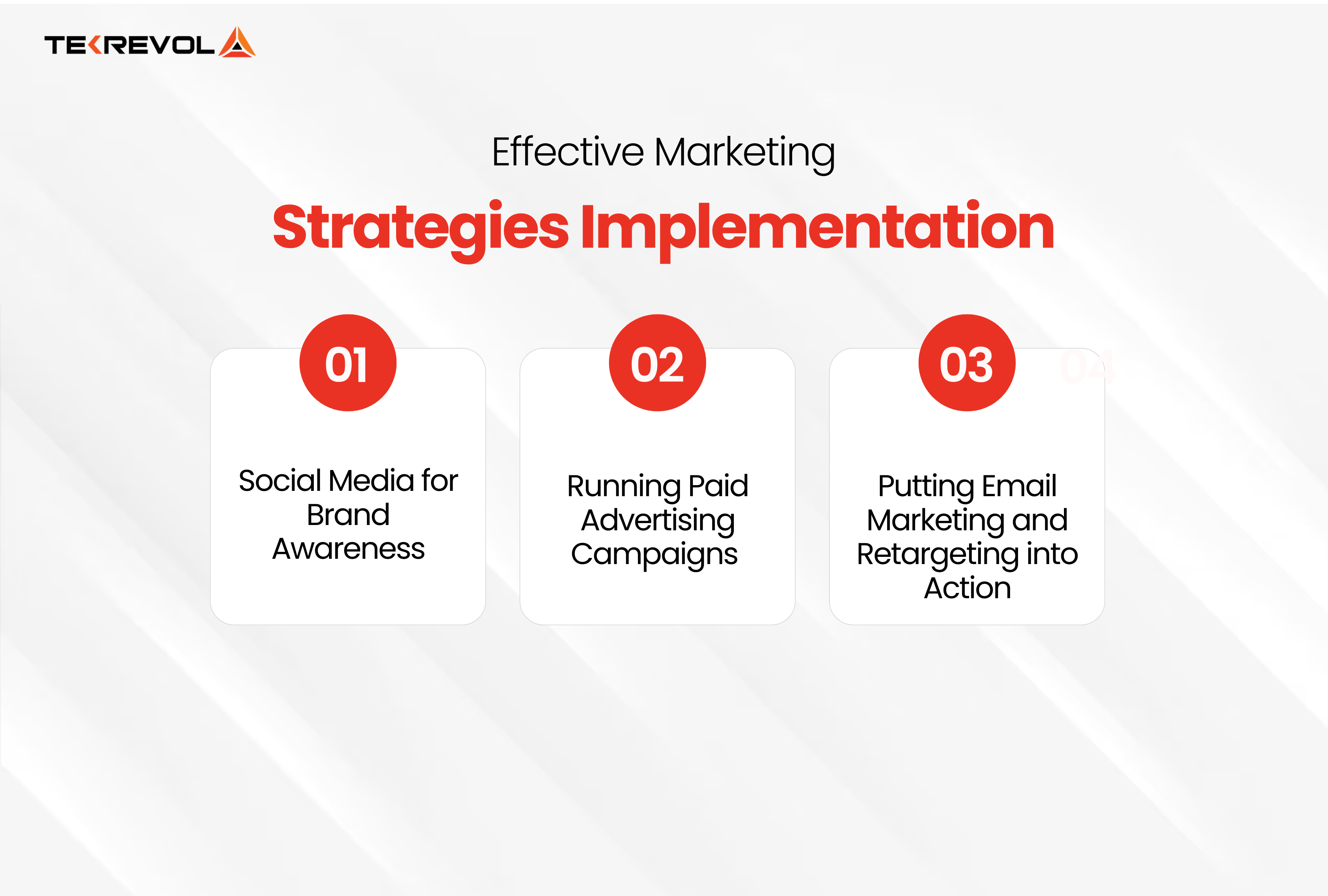
Social Media for Brand Awareness
If your online store isn’t on social media, does it really count? More than 4.8 billion individuals use social media, and a lot find brands there first.
Here are the ways to make a difference:
- Instagram & TikTok: Ideal for product promotion with eye-grabbing visuals and short clips.
- Facebook & Pinterest: Great for product discovery and running targeted ads.
- LinkedIn & Twitter (X): Best for B2B ecommerce businesses.
Pro Tip: User-generated content (UGC) drives 29% higher web conversions. Encourage customers to share their purchases!
Running Paid Advertising Campaigns
Want quick traffic and sales? Paid ads are the way to go.
- Google Ads: Grab individuals actively searching for your products.
- Facebook & Instagram Ads: Target specific groups based on interests, location, and behaviors.
- TikTok Ads: If your audience is young and hip, TikTok ads are magic.
Pro Tip: Begin small, test various ads, and double down on what works!
Putting Email Marketing and Retargeting into Action
Email! Not dead—rather, $42 in revenue for every $1 invested in email marketing.
Utilize emails for:
- Cart Abandonment Reminders: Grab lost sales with a friendly “Hey, you forgot something!” email.
- Personalized Offers: Offer discounts based on browsing and purchase history.
- Loyalty Programs & Exclusive Deals: Reward your top customers!
Retargeting does the trick, too. Only 2% of first-time website visitors ever buy. Employ Facebook Pixel & Google Remarketing to encourage them to return.
Website Security and Performance Guarantee
Protecting Customer Data
Cybercriminals adore stealing customer information—do not let them. Data breaches cost businesses an average of $4.45 million in 2025.
- SSL Certificates (HTTPS): Secures user data, making your website safe to visit.
- PCI Compliance: If you process credit cards, you have to comply with PCI DSS security standards.
- Regular Security Audits: Perform penetration tests to identify vulnerabilities before hackers do.
Stopping Fraud and Cyber Attacks
Fraud is real – and it’s expected that $48 billion will be lost to fraud in 2025.
Stop it with:
- Two-Factor Authentication (2FA): Provides an additional layer of security.
- Fraud Detection Tools: Shopify, WooCommerce, and Magento include native fraud protection.
- Firewalls & Bot Protection: Prevent bad traffic before it harms you.
Optimizing Website Speed and Performance
Slow sites kill sales. Each second of lag decreases conversions by 7%.
Speed up your site with:
- CDNs (Content Delivery Networks): Load content quickly for international visitors.
- Optimized Images: Compress images without losing quality.
- Faster Hosting: Invest in good hosting—cheap servers = slow websites.
Pro Tip: Test your site speed using Google PageSpeed Insights.
Measuring Success with Analytics and Optimization
Tracking Key Ecommerce Metrics
If you’re not tracking your performance, you’re just guessing. Here are the key ecommerce KPIs to monitor:
- Conversion Rate (CR): What percentage of visitors actually make a purchase?
- Customer Acquisition Cost (CAC): How much does it cost to acquire a new customer?
- Customer Lifetime Value (CLV): How much revenue does a customer generate over their lifetime?
- Cart Abandonment Rate: How many visitors abandon checkout without purchasing? (Suggestion: it’s likely too high.)
Using Google Analytics and Heatmaps
- Google Analytics: Helps track traffic sources, visitor behavior, and top-performing products.
- Heatmaps (Hotjar, Crazy Egg): Shows where users click, scroll, and drop off.
Pro Tip: If visitors keep abandoning your checkout page, something is wrong—fix it!
A/B Testing and Continuous Improvement
Never assume you’ve built the perfect ecommerce site. Instead:
- A/B tests different layouts, CTAs, and product pages.
- Experiment with various pricing models (free shipping vs. discounts).
- Improve based on customer feedback.
The top ecommerce websites continuously optimize.
How TekRevol Can Help?
So, after all that, you may be thinking, “This sounds great, but I don’t have the time or knowledge to do it all myself!” That’s where TekRevol comes in.
TekRevol is a top ecommerce development firm that assists companies in creating, growing, and optimizing their online stores. Whether you’re beginning from the ground up or want to enhance your current ecommerce site, we’ve got you covered.
Why TekRevol?
- Custom Ecommerce Development – We create custom-made ecommerce sites optimized for conversions and performance.
- Platform Expertise – It’s Shopify, WooCommerce, Magento, or custom solutions – we use the best platforms for you.
- SEO & Digital Marketing – We don’t only create your store; we make it rank on Google and drive traffic that converts.
- AI-Powered Personalization – Want to have AI-powered recommendations like Amazon? We can do that too!

 122 Views
122 Views March 24, 2025
March 24, 2025


